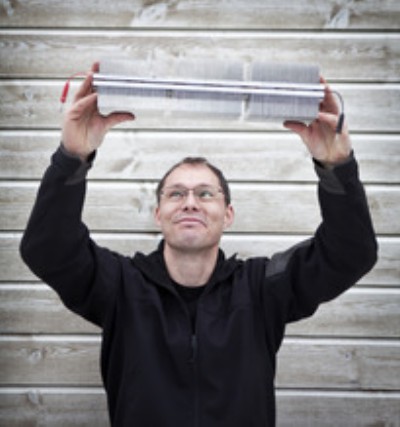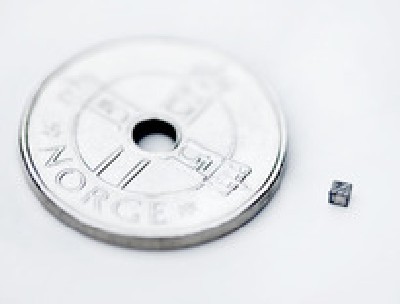May
5
A Totally New Take On Heat Pumps
May 5, 2011 | 1 Comment
From out of Norway comes a new take on the heat pump. Scientists at the University of Stavanger in Norway (USN) are testing an entirely new kind of heat pump. While heat pumps used today typically last 10 to 20 years, the Norwegian scientists are testing an entirely new kind of heat pump. Today’s heat pumps typically last 10 to 20 years, the new Norwegian design will last practically indefinitely producing electricity.
The new heat pump consists of many miniature heat pumps as small as one cubic millimeter. Heating a house requires several thousand of them. The miniature pumps assembled together into larger units that can be tall and thin or short and wide.
Doctor of Physics Jan Kåre Bording who is Chief Engineer at the USN says, “The most important advantages of the new heat pump is that you can regulate its size and form and that it is more durable than heat pumps are today. It is also more environmentally friendly.”
With colleague Professor of Materials Science Vidar Hansen, the team is developing a new heat pump that is thermo-electric. They have investigated its disadvantages and advantages compared with the heat pumps we use today. They believe the heat pump will be fully developed and ready to be launched on the market in five to ten years.
The science is thermo-electric technology for heat pumps by making use of materials that produce electricity when they are subjected to differences in temperature. With no moving parts the new heat pump has a dramatically longer life than today’s heat pumps.
Bording says, “The heat pumps we use today consist of several movable parts. After some time different parts break down and will have to be changed. The new heat pump consists of several miniature heat pumps and these have a very simple design. In opposite to today’s heat pumps, these miniature heat pumps consist of only one part.
Because they consist of only one metal part it’s easier to avoid wear and tear. You can compare the heat pump to a golden ring. A golden ring won’t be broken. The miniature pumps will just continue to pump. We stick fans on them, and they must be replaced, but the heat pump itself will stay and be equally effective after 10,000 years.”
How’s that for a “Wow” moment?
The small heat pumps can be assembled together to form larger units. The USN team also envisages that it may be possible to place several thousand of the small heat pumps at different places in the house.
Hansen says, “We don’t want a large wood-burning stove in the middle of the house as in the old days. It’s (efficiency is) better with more, smaller heat sources.”
But to start with the team will create units that can be placed at one or two locations in the house. The new heat pumps offer great flexibility as to where in the house you want them. It would be an advantage to have them in places where it is especially cold.
“For example, it may be a good idea to put them under the floor, so that the floor will heat the room. When the heat pump has a large surface, it produces more heat,” Bording says.
The new heat pumps will be more environmentally friendly than those in use today. One problem with today’s heat pumps is that they can leak cooling gas. Cooling gas is usually freon gas, which destroys the ozone layer. There is no risk of losing cooling gas in thermoelectric heat pumps, since gas has been replaced with clean electricity.
Today’s common air to air heat pumps begin to deteriorate after one year. Then they need to be inspected annually incurring a professional expense. After 10 to 20 years, larger parts of the pump such as the compressor have a higher likelihood of failure. And they still, even as efficient as they are require an outside source of grid quality power.
The USN press release notes Bording saying thermal electric technology has long been used to generate electricity, as the phenomenon of thermo-electricity has been known for more than a hundred years.
Only now the Norwegians are busily trying to find out how we can use this phenomenon to pump heat into the house. According to the researchers the new heat pump will be fully developed and ready to be launched on the market in five to ten years.
Time will tell if the thousands of micro heat pumps needed can be produced at scale at attractive prices. If the home heating and some or all of the electrical demand can be met by this idea then a great share of the world energy load could be simply shed off cutting back in the need for power generation.
It might be too good to be true – but the lab units seem to be working . . .
We do have a few questions though, does the pump allow a straight electric output and can they reverse to provide cooling? Plus how is the temperature difference employed?
It’s early in the technology – but the promise is strongly motivating.
Comments
1 Comment so far




This is really a good and updated information about the heat pump aspect is shared in post.I get updated my self about heat pump by read this post.Actually i want to install a heat pump in my home,but before installing want to know which is best for domestic use .